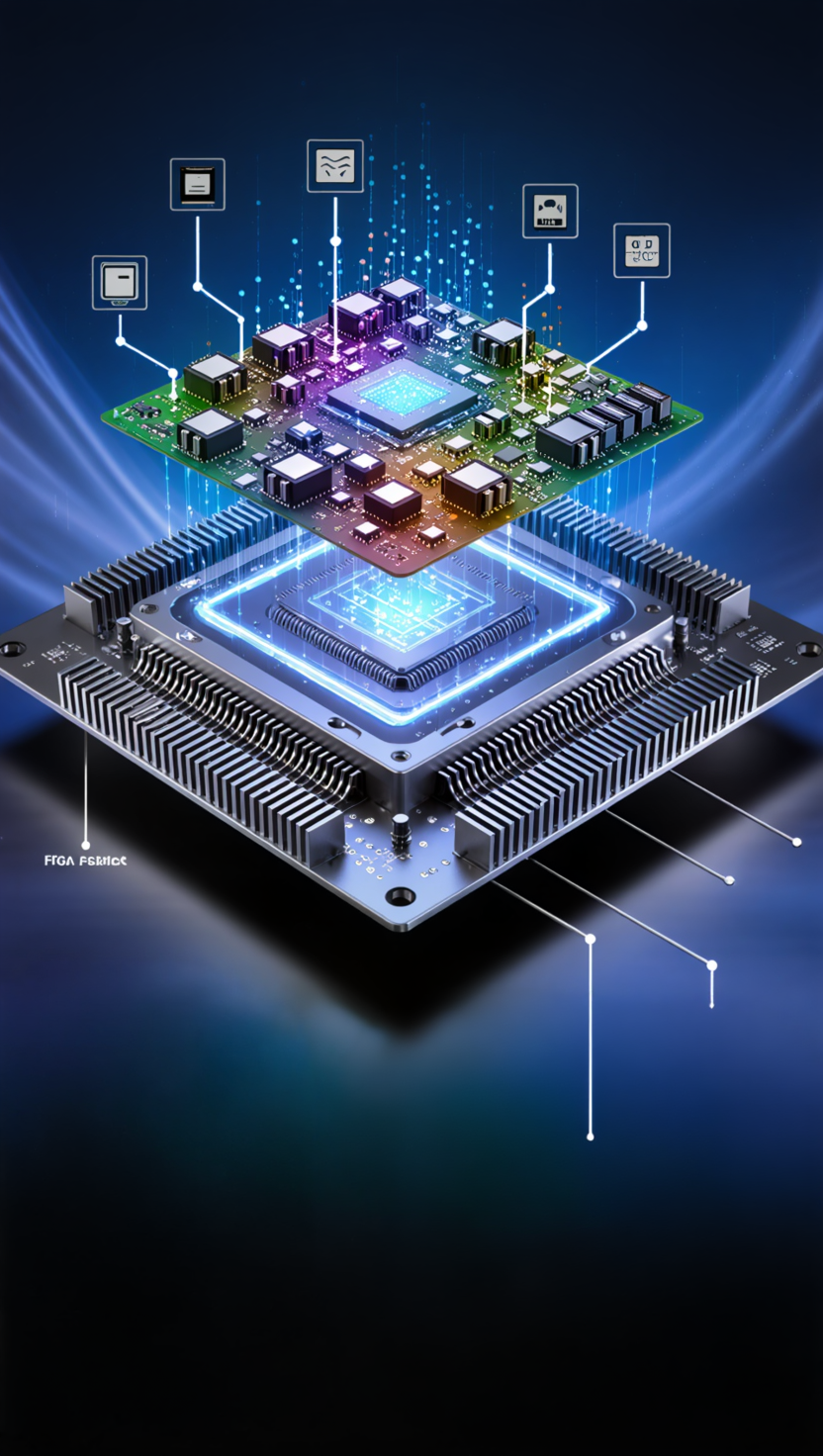Series: How to Choose an FPGA Chip - Part 2.2: Automotive and Industrial Control — Reliability Meets Real-Time Performance
2025-09-28 11:04:13 1305
Part 2.2: Automotive and Industrial Control — Reliability Meets Real-Time Performance
Automotive and industrial markets are among the most demanding for FPGA deployments. These environments require deterministic real-time performance, safety certification, and long lifecycle support. For engineers, FPGAs provide flexible hardware for ADAS, robotics, and industrial automation. For managers, automotive and industrial projects require parts with functional safety compliance, extended lifetimes, and guaranteed supply stability.
1. Automotive-Grade FPGA Selection
- Engineer’s View: Automotive FPGAs must meet ISO 26262 functional safety standards and AEC-Q100 qualification. They are used in ADAS sensor fusion, in-vehicle networking, and infotainment systems. Wide temperature tolerance and low failure rates are mandatory.
• Manager’s View: Automotive-grade parts are more expensive than consumer-grade equivalents, but their long lifecycle (15+ years) aligns with vehicle development cycles. ASP ranges from $30 for simple devices to $500+ for advanced SoC FPGAs.
2. Industrial Real-Time Control
- Engineer’s View: Industrial systems like robotics, PLCs, and motor control demand deterministic timing and reliability under harsh conditions. Mid-range FPGAs are widely used to integrate industrial communication protocols such as EtherCAT, Profinet, and Modbus.
• Manager’s View: Industrial FPGAs often guarantee availability for 10–15 years, essential for factories and automation equipment. ASP typically ranges from $20–$100. Energy efficiency and wide-temperature operation lower total system cost.
• Examples: Xilinx Artix-7, Intel Cyclone 10, Lattice ECP5.
Comparative Table: FPGAs in Automotive and Industrial Control
|
Application |
FPGA Requirements |
Example Families |
Engineer’s Priority |
Manager’s Concern |
|
Automotive ADAS |
ISO 26262, AEC-Q100, sensor fusion, safety |
Xilinx Zynq UltraScale+ MPSoC, Intel Cyclone V |
Low-latency sensor fusion, safety compliance |
High ASP, long lifecycle |
|
In-Vehicle Networking |
CAN, FlexRay, Ethernet AVB |
Intel MAX 10, Microchip PolarFire SoC |
Protocol flexibility, deterministic response |
Cost sensitivity, supply assurance |
|
Industrial Control |
EtherCAT, Profinet, deterministic logic |
Xilinx Artix-7, Lattice ECP5 |
Real-time motor control, robotics |
Stable lifecycle, moderate ASP |
Case Studies
Case Study 1: Automotive ADAS Sensor Fusion
Challenge: An automotive supplier needed to process radar, LiDAR, and camera inputs in real time.
Solution: Xilinx Zynq UltraScale+ MPSoC with integrated ARM Cortex-A53 cores and FPGA fabric.
Result: Enabled real-time object detection and lane-keeping assistance.
Manager’s Perspective: ASP ~$300, long lifecycle with AEC-Q100 qualification.
Case Study 2: Industrial PLC System
Challenge: A factory automation company needed deterministic control loops with multiple communication protocols.
Solution: Intel Cyclone 10 FPGA with integrated DSP slices.
Result: Delivered sub-microsecond latency for motion control and supported EtherCAT/Profinet.
Manager’s Perspective: ASP ~$70, stable 15-year lifecycle ensured supply continuity.
Case Study 3: Robotics Motor Control
Challenge: A robotics startup needed high-performance motor control with low power consumption.
Solution: Lattice ECP5 FPGA (~2 W power, compact package).
Result: Achieved precise motor synchronization with minimal energy use.
Manager’s Perspective: ASP ~$50, lifecycle stability critical for scaling production.
Conclusion
Automotive and industrial markets demand FPGAs that balance real-time performance, safety, and reliability with long-term availability. Engineers benefit from flexible architectures to meet protocol and control challenges, while managers rely on guaranteed lifecycles and supply stability. Selecting the right FPGA in these markets is not just a technical decision — it is a long-term strategic investment.






